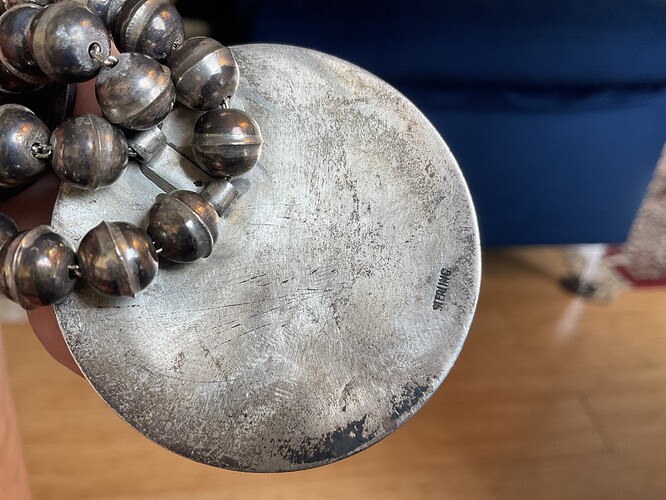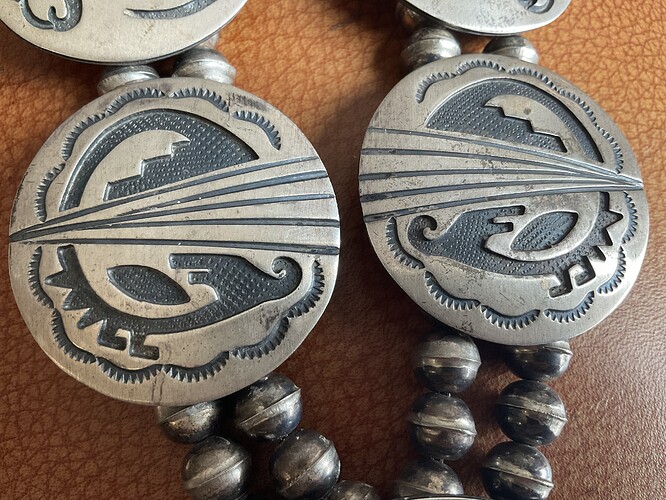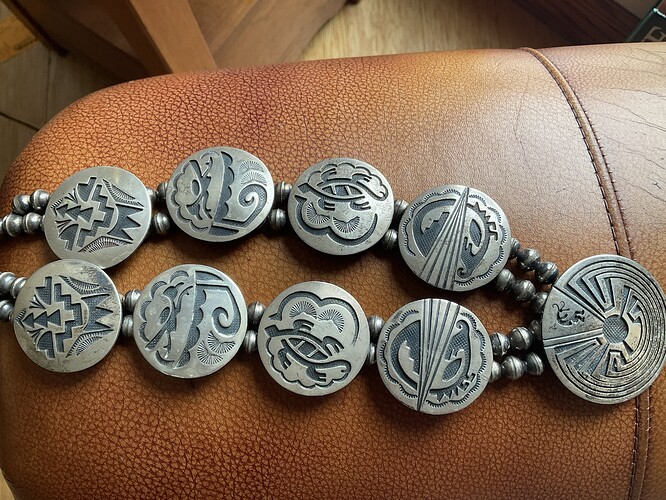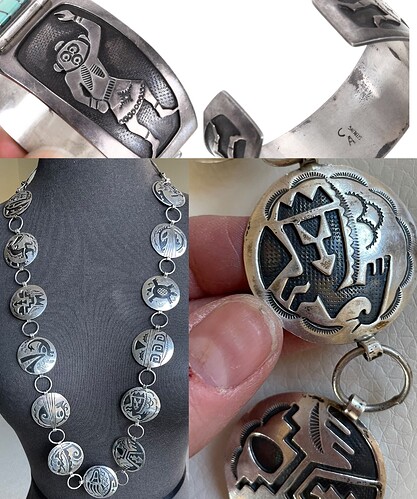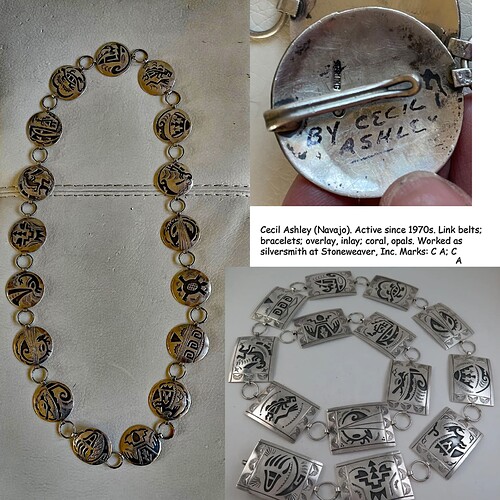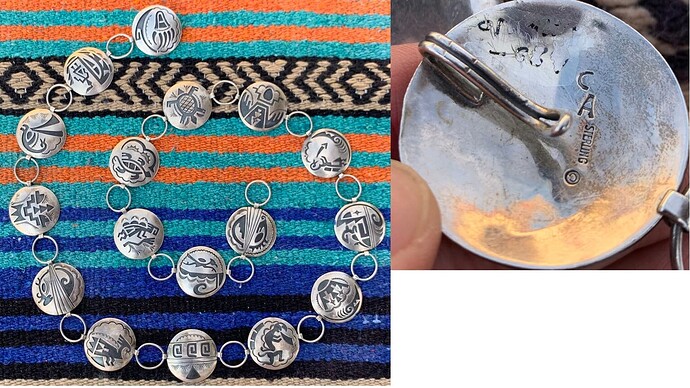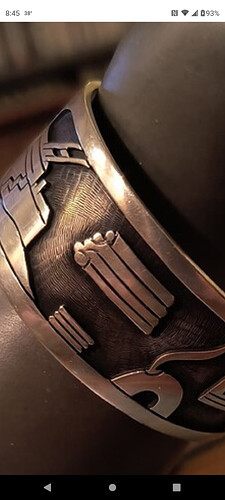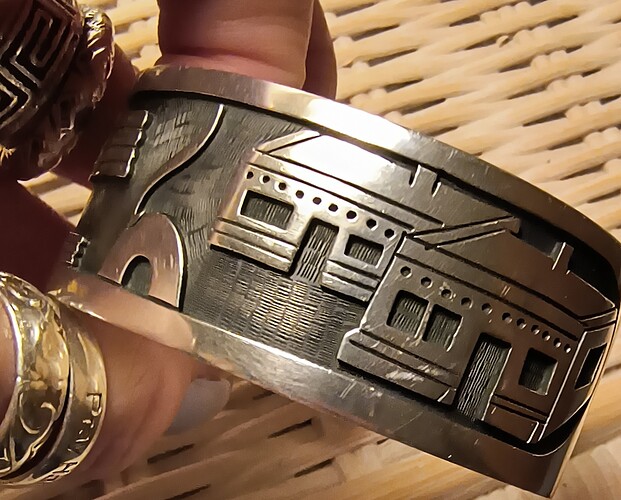Does anyone know who this artist may be? It is made very well. bench beads are hand made. Interesting stamping in the overlay. Where is the hallmark usually placed? It just says sterling.
what a beautiful necklace! i don’t know if you can call it a squash, if it doesn’t have blossoms on it. i think it’s technically a ‘station’ necklace? Avanyus and roadrunners and turtle/lizards and kokopelli, man in the maze, storm clouds, it’s got it all! what a wonderful find.
i think the hallmark placement just depends on the maker - some put it right near the sterling mark, some centered it on the piece, some just kinda put it wherever. that background stippling is unusual - i wonder if that might help you identify it.
So it is called stippling. It’s good to know. You seem to have a good background on Hopi overlay.
Hi Nance. The stippling is actually stamp work most likely applied before the pieces were soldered together. While most of the themes look like Hopi, and are well done, stylistically this looks like it may well be the work of a Navajo silversmith working in a Hopi like style.
@mmrogers , I wondered about that. But I love it either way!
It’s a lovely necklace!
The background texturing in true Hopi overlay work I’ve seen seems like it is usually much more dense than this - this is very openly spaced. I kinda dig the look, with all the detail in the overlay itself. nice contrast, whoever made it. it seems very well executed.
I agree with you, @Jemez2 . I would also describe the familiar Hopi look as many small etched in lines. These seem to be more like they were poked. When you look at it at a distance it almost looks cross hatched. But then when you pull in close, you see they’re more like dots. But I like it too!
I appreciate all the replies. It is nice to have have the opinions of various knowledgeable people. I am learning things!
Wow! It’s a match! Thanks. And mmrogers was correct in assuming it was Navajo.
Texturing in Hopi work is usually done after the pieces are cut and soldered together. It’s also stamp work, but the stamp is very different - a single very small, very fine straight stamp cut to a very thin, very fine wedge, applied again and again, side by side in rows within the recessed areas. It’s very difficult to do properly, time consuming, and requires many months, even years of practice to really master. That’s why you typically don’t see it in non-Hopi, Hopi ‘style’ work. Way too much time required to learn and apply. Much faster, and easier to use an electric engraver to stipple, or as is the case with this silversmith, broadly texture the background area with a larger scale texturing stamp before the pieces are soldered together. All of these methods require skill, but you’re far more likely to see the latter two used when Navajo, or non-hopi craftsmen are doing the work.
Thank you for the info. After reading your post I looked closely again (I have before because I love them) at some of my Hopi pieces. I believe a close up of this cuff that I posted a while ago shows this.
That is very nice texturing on that bracelet. Do you know who the artist is?
